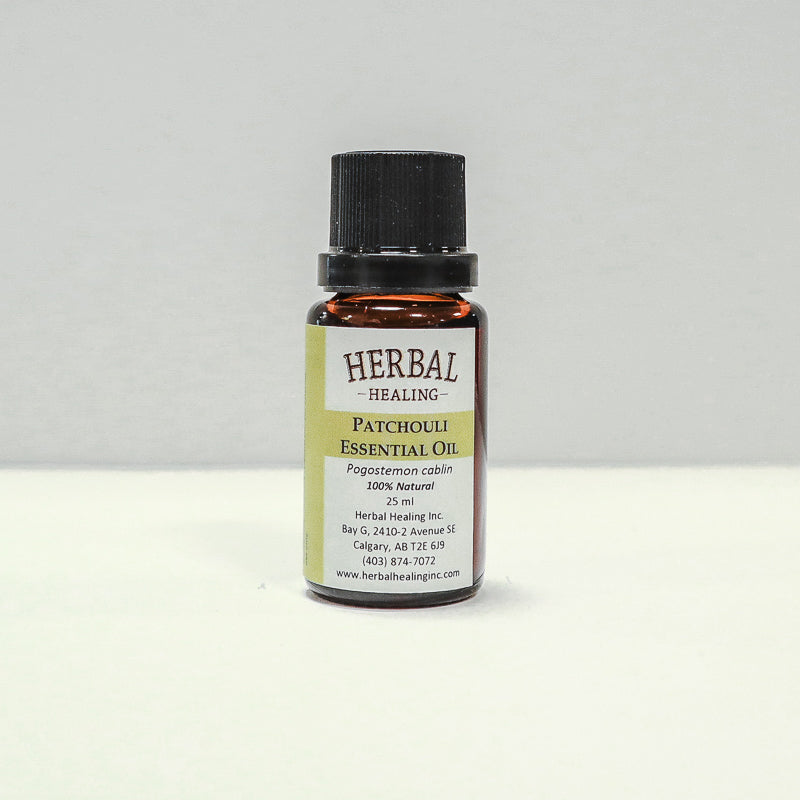



Patchouli (Pogostemon cablin) Essential Oil
- $22.95 CAD
- $22.95 CAD
- Unit price
- per
25 ml
Couldn't load pickup availability
Botanical Name: Pogostemon cablin
Plant Part: Leaves
Description: Patchouli is a very fragrant herb with soft oval leaves and square stems. It grows from 2 to 3 feet in height and provides an unusual odor that is nonetheless characteristic of patchouli when the leaves are rubbed. The colour of the Patchouli Essential Oil is affected by the distillation machine. If distillation is done in a stainless steel vessel the colour of the oil will be light, but if done in an iron vessel the colour will be darker.
Colour: Golden orange to dark reddish brown viscous liquid.
Common Uses: Patchouli is recognized by aromatherapists as being effective for combating nervous disorders, helping with dandruff, sores, acne, skin irritations and acne. The specific properties include use as an antidepressant, anti-inflammatory, anti-emetic, anti-microbial, antiphlogistic, antiseptic, antitoxic, antiviral, aphrodisiac, astringent, bactericidal, carminative, deodorant, digestive, diuretic, febrifuge, fungicidal, nerving, prophylactic, stimulating and tonic agent. In the perfumery industry, it is interesting to note that Patchouli improves with age, and that the aged product is what is preferred over freshly harvested. In aromatherapy, Patchouli is an excellent fixative that can help extend other, more expensive oils.
Consistency: Thick
Note: Base
Strength of Aroma: Medium
Blends Well With: Sandalwood, Bergamot, Cedarwood, Rose, Orange, Cassia, Myrrh and Opopanax.
Aromatic Scent: Patchouli has a warm, earthy aroma with fresh fruit - like tones.
History: Before it became popular in Europe, Indian shawls and Indian ink were identified by the unique patchouli odor.
Caution: None known.
25 ml
RELATED PRODUCTS
- Choosing a selection results in a full page refresh.



